Iridescence Is Chrome’s More Playful, Hard-to-Define Cousin — And You're About to See It Everywhere
This kinetic finish signals a broader shift toward surfaces that move, shimmer, and surprise. Here's where to find it now
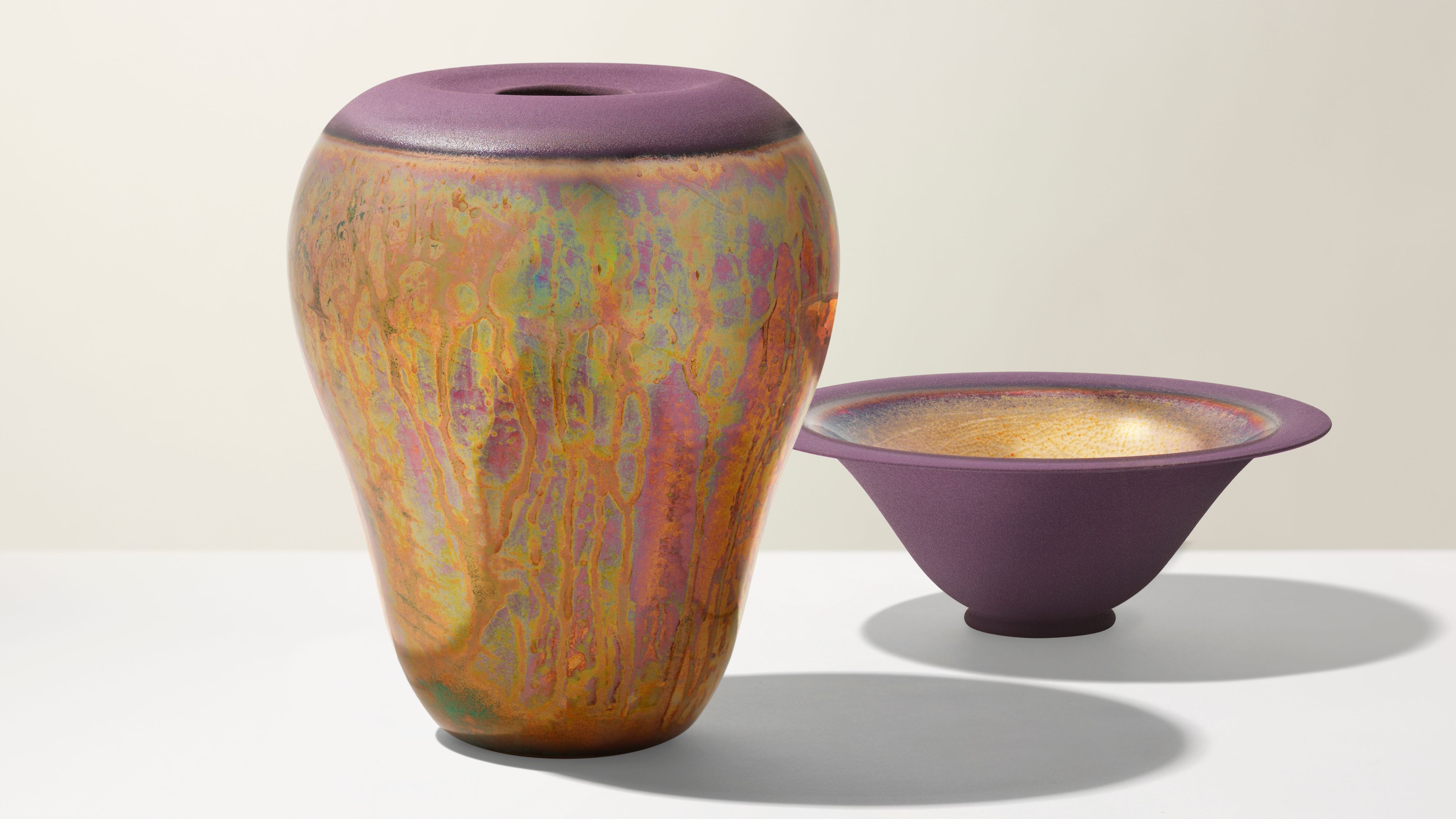

At Salone del Mobile 2025, inside a postmodern domus conceived by architect Lucia Valzelli, Italian design house Ghidini1961 debuted something surreal: Candy. A shimmering, multicolor, multidimensional metal finish that looks like the material embodiment of a mood ring — or what space-age futurists in the 1960s might have imagined furniture would look like in the future. Bright oranges, blues, purples, and greens shimmer in constant flux — somewhere between chrome and illusion.
At first glance, Candy could be mistaken for polished brass. But iridescence is mutable — shifting with the light, the angle, the room. This interior design trend is a living surface: one-of-a-kind, not just by SKU but by moment.
Candy wasn’t alone. Across Milan Design Week, iridescence emerged as a finish to watch for its abrupt disruption to the often static nature of interiors. “Iridescence speaks to the growing desire for dynamism in design,” says Giuseppe Ghidini, VP of sales and marketing at Ghidini1961. “The appeal lies in its ability to transform spaces — bringing a sense of movement, fluidity, and surprise to furniture and decor.”
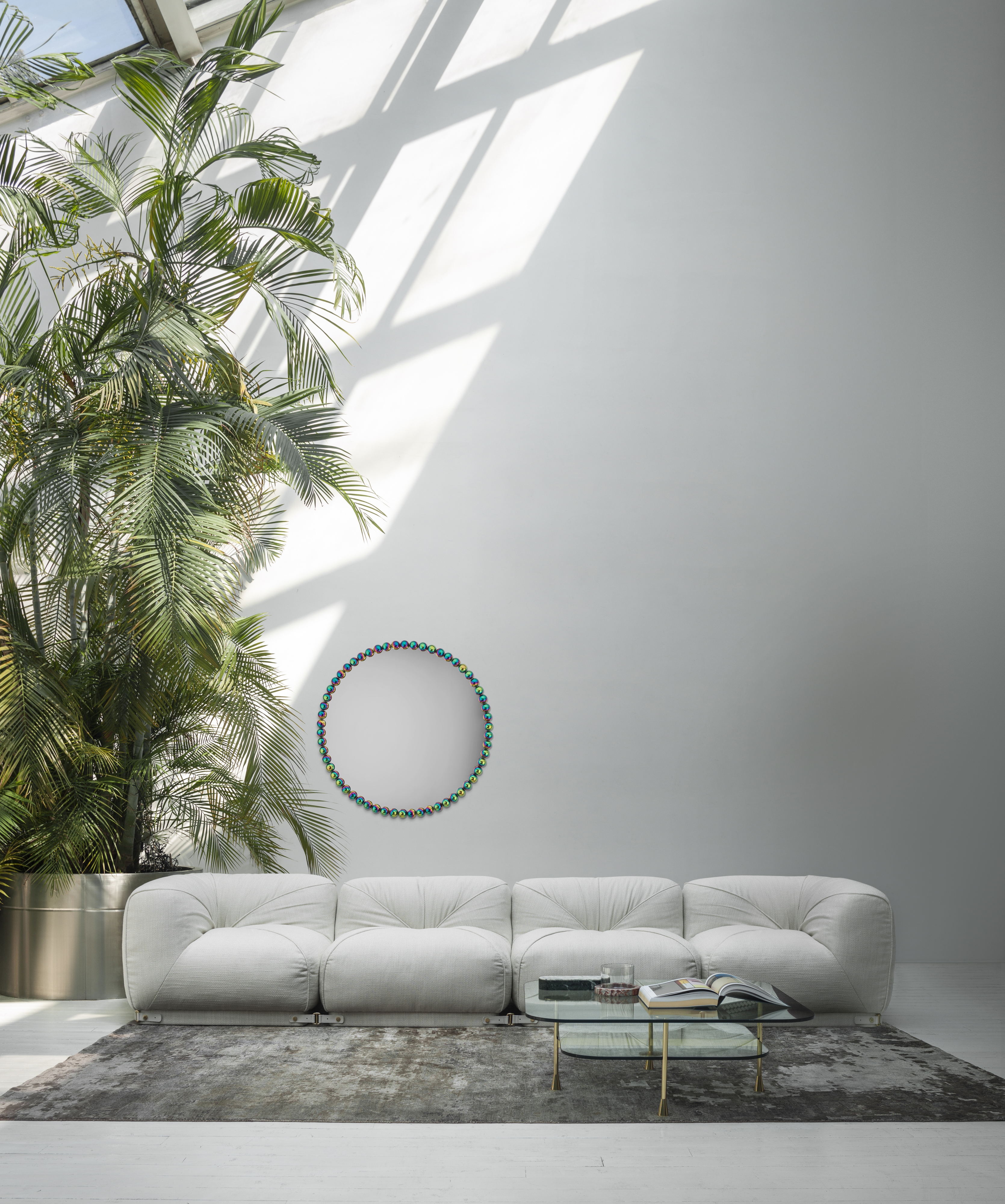
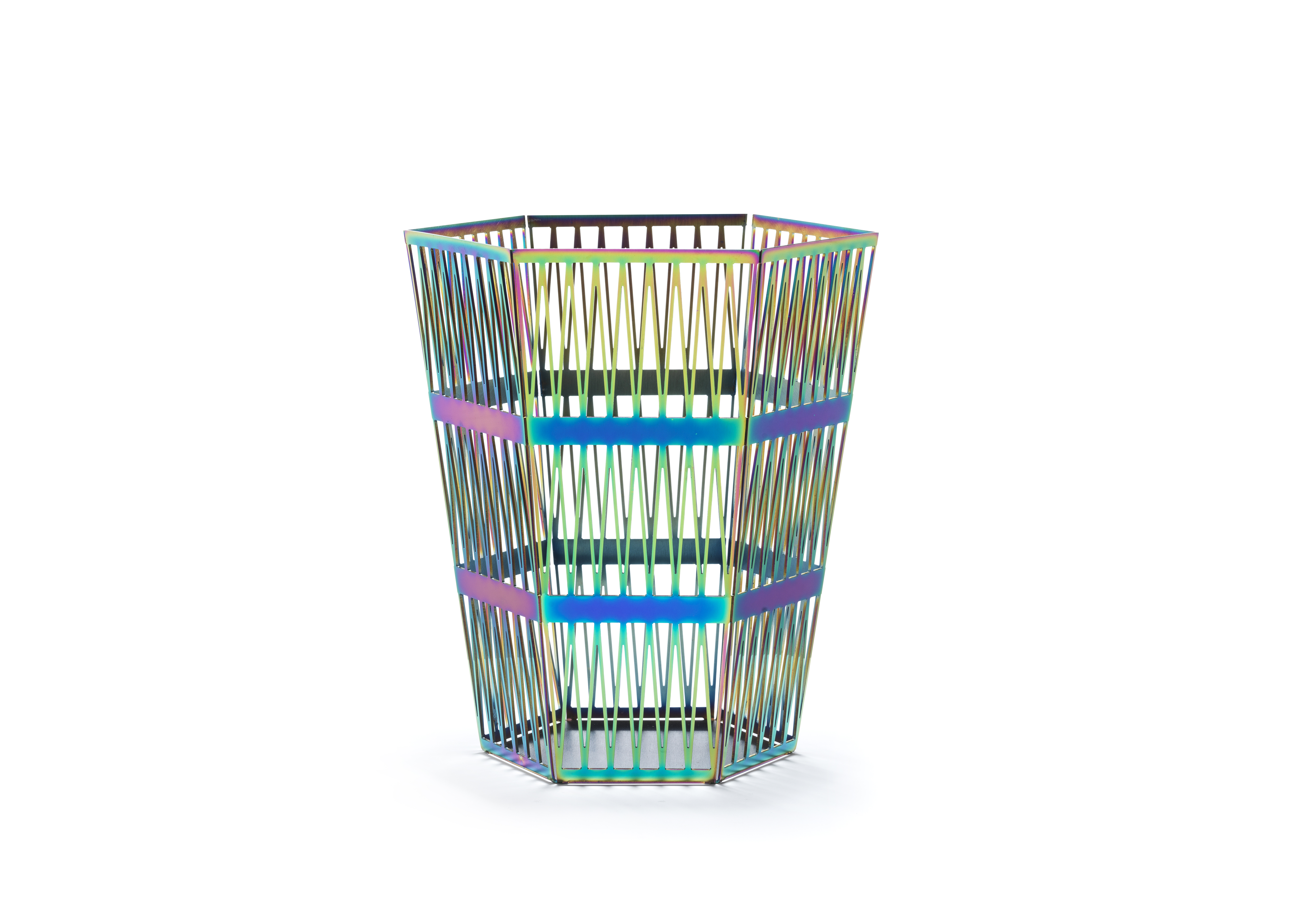
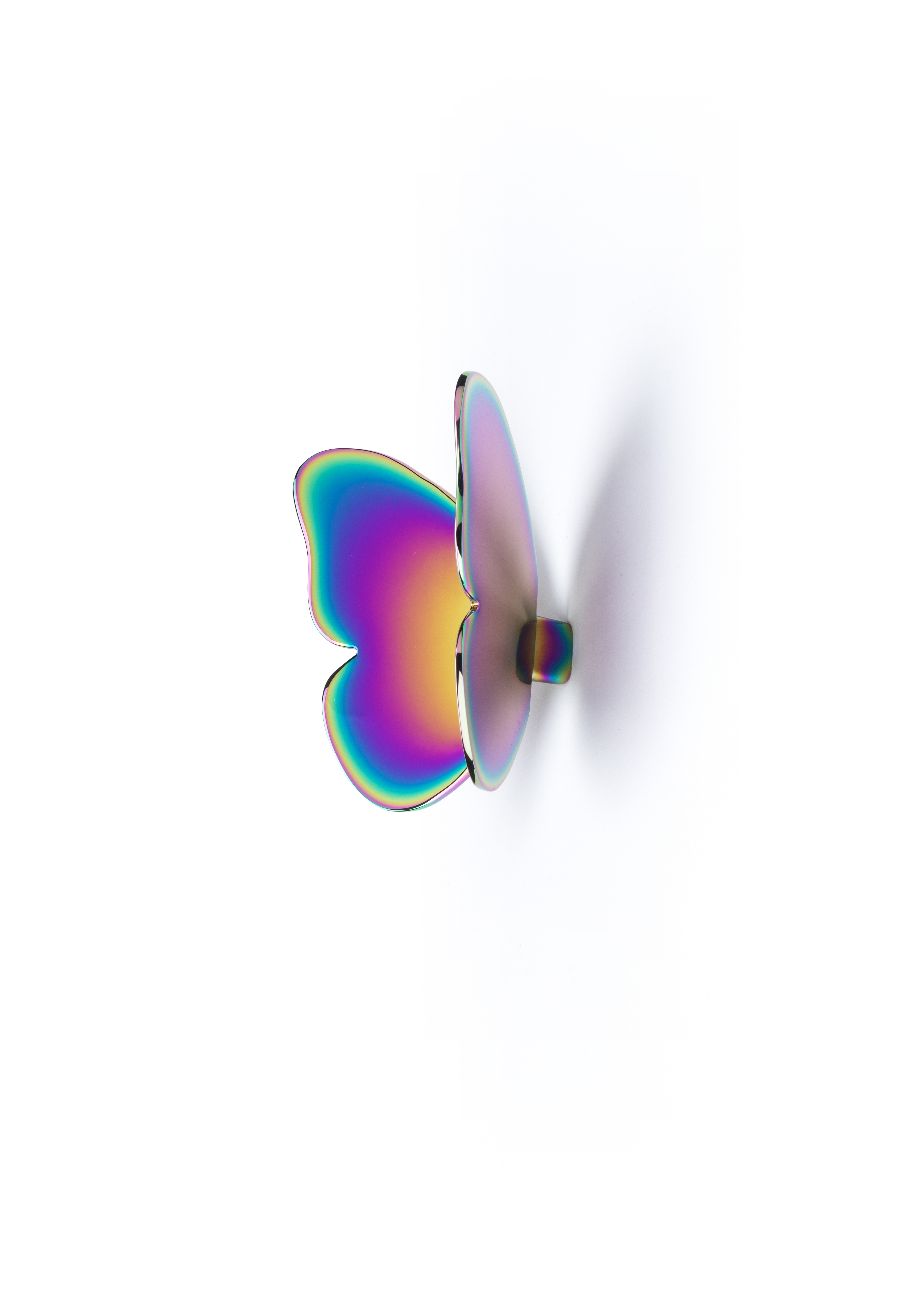

While chrome skews sharp and brass leans traditional, iridescence occupies a stranger, softer space.
According to the team at Artemest, its “ever-evolving effect allows for a broader spectrum of color integration, making it feel both futuristic and organic at the same time.”
In other words: it has range.
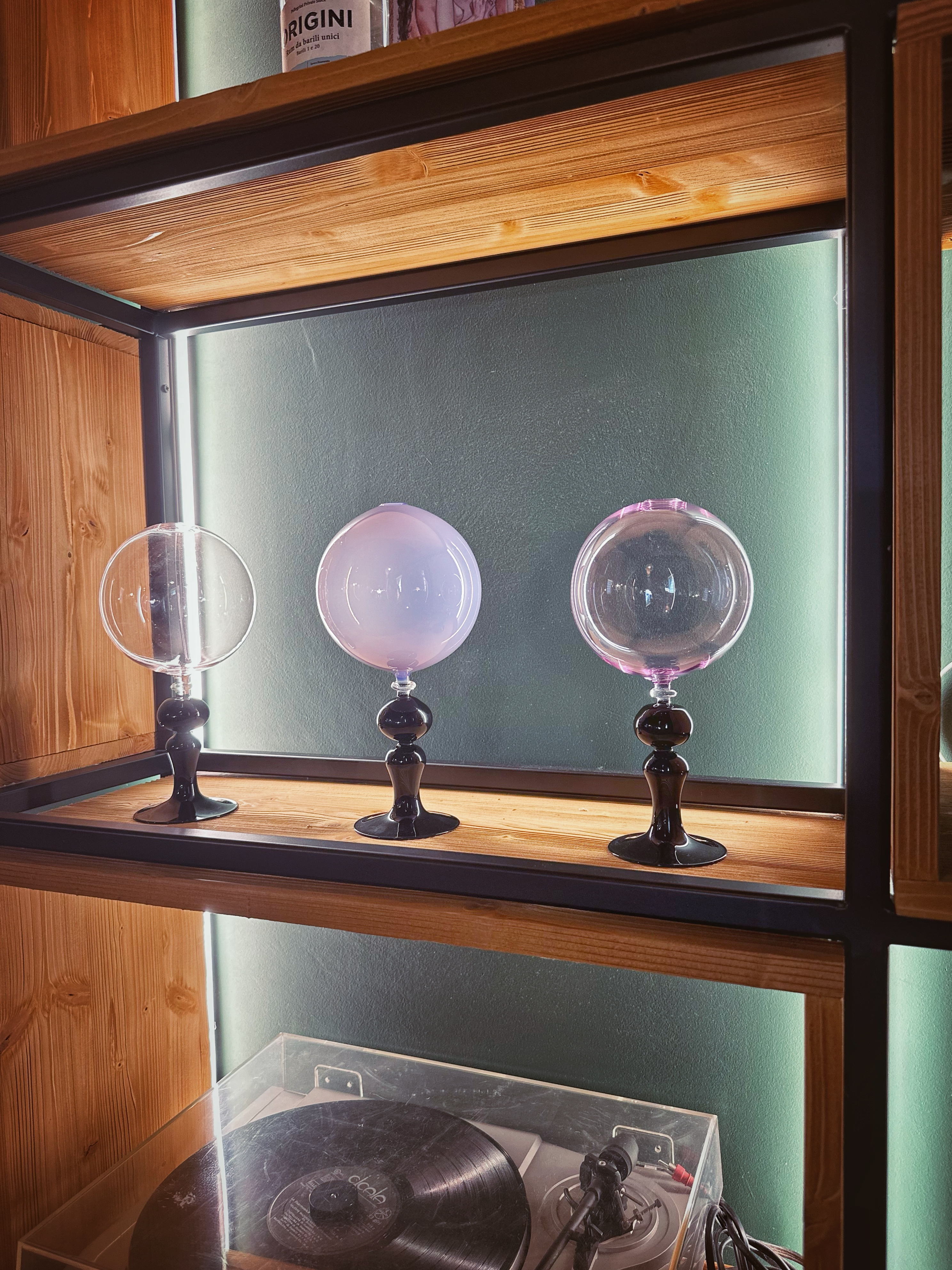
Vaporetto’s Luna sculptures might not shine, per se, but their flame-worked borosilicate glass shifts from pink to purple with the light, mimicking iridescence in slow motion.
Beyond aesthetics, though, this next-gen finish reflects a broader shift across categories — a rejection of minimalism’s flat uniformity in favor of expressive, one-of-a-kind color stories.
Be The First To Know
The Livingetc newsletters are your inside source for what’s shaping interiors now - and what’s next. Discover trend forecasts, smart style ideas, and curated shopping inspiration that brings design to life. Subscribe today and stay ahead of the curve.
Gen Alpha, for instance, doesn’t want Millennial Pink. They want every color — at once. That preference is already well-documented in sectors like beauty, where rainbow branding is the new shorthand for relevance.
If maximalism is the mood, iridescence might be the interior design equivalent.
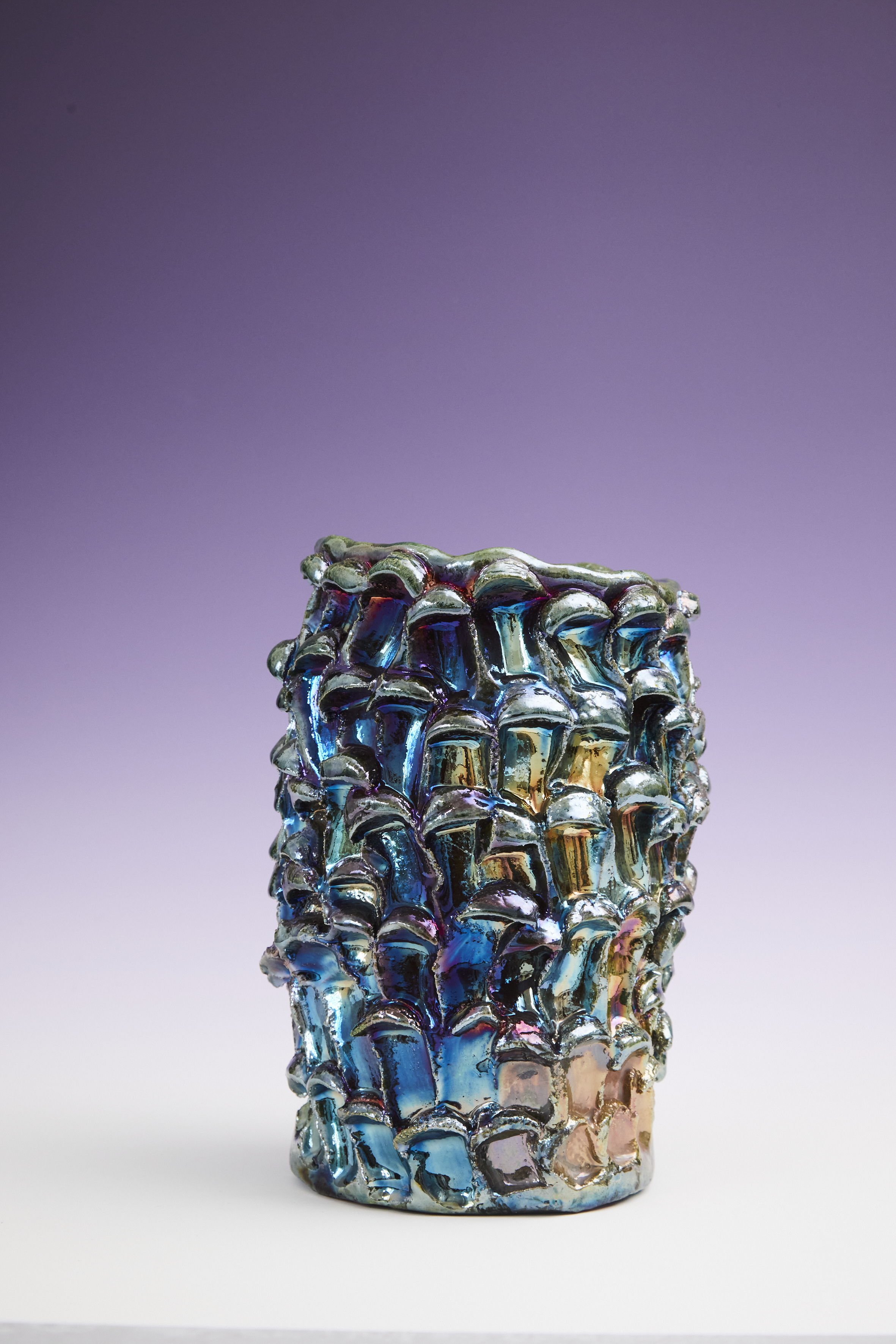
Daria Dazzan’s Onda series blends fashion and form — an embroidered gesture on ceramic, finished in iridescent glazes that bring movement to still objects.
“In 2025, we expect to see more experimentation with light-reactive surfaces, high-tech coatings, and finishes that bring movement to still objects,” Giuseppe adds. While Candy is a metal finish, he predicts similar executions in glass, fabric, and beyond.
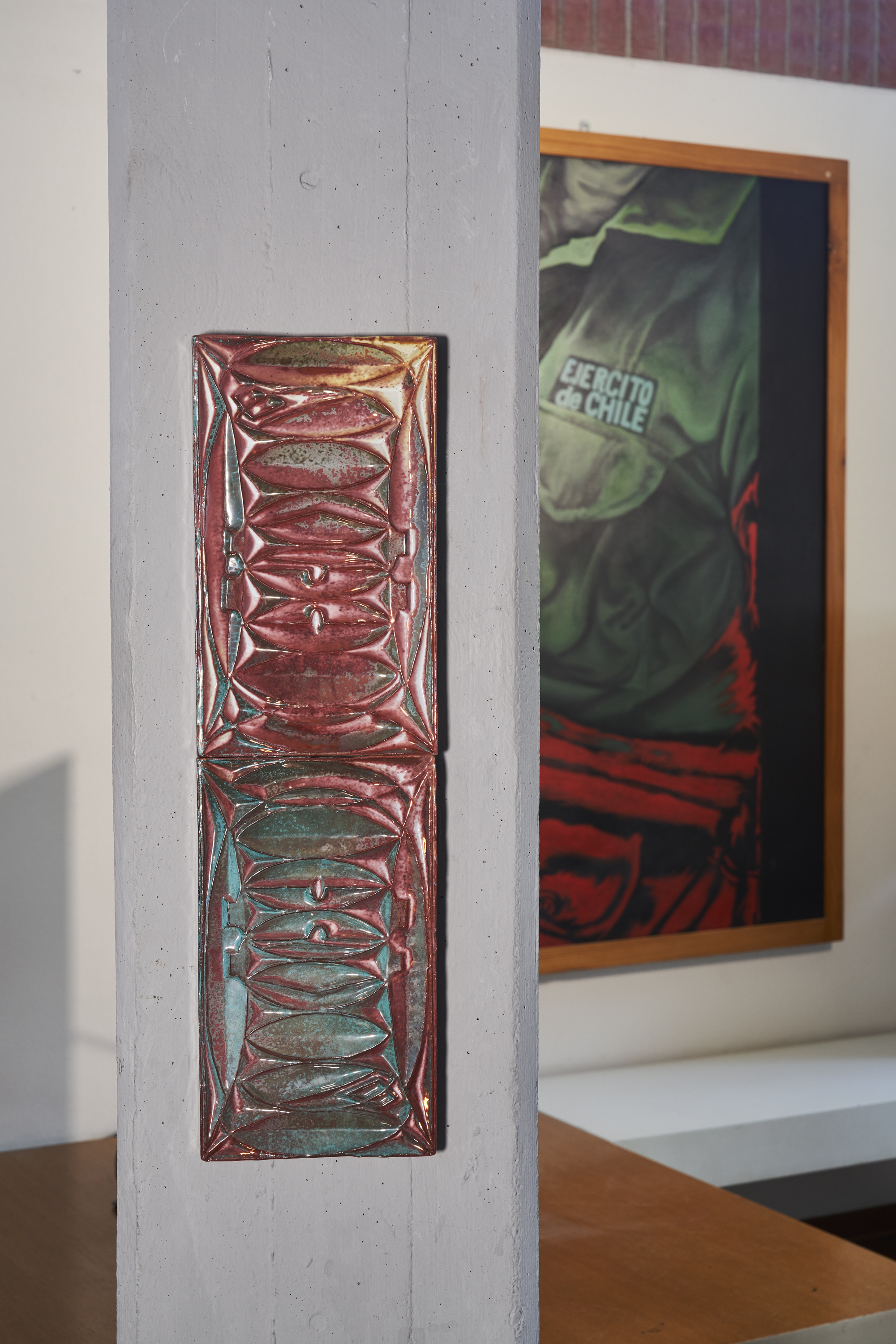
Ceramiche Lega’s lustrous tile, created by Martina Scarpa, undergoes a rare second reduction firing, revealing an ethereal copper sheen kissed with iridescence.
That future may already be here. On art-forward platforms like Artemest, pieces such as the Luci in Piazzetta a Caprivase by Nino Basso for Design Center 1991 reflect the same impulse.
“This ceramic piece, crafted using the raku technique, has a mesmerizing polychrome finish that shifts beautifully between vibrant and muted hues,” the team explains. “The raku process enhances its unpredictability — each piece becomes a unique fusion of fire, glaze, and texture, echoing the organic nature of iridescence itself.”
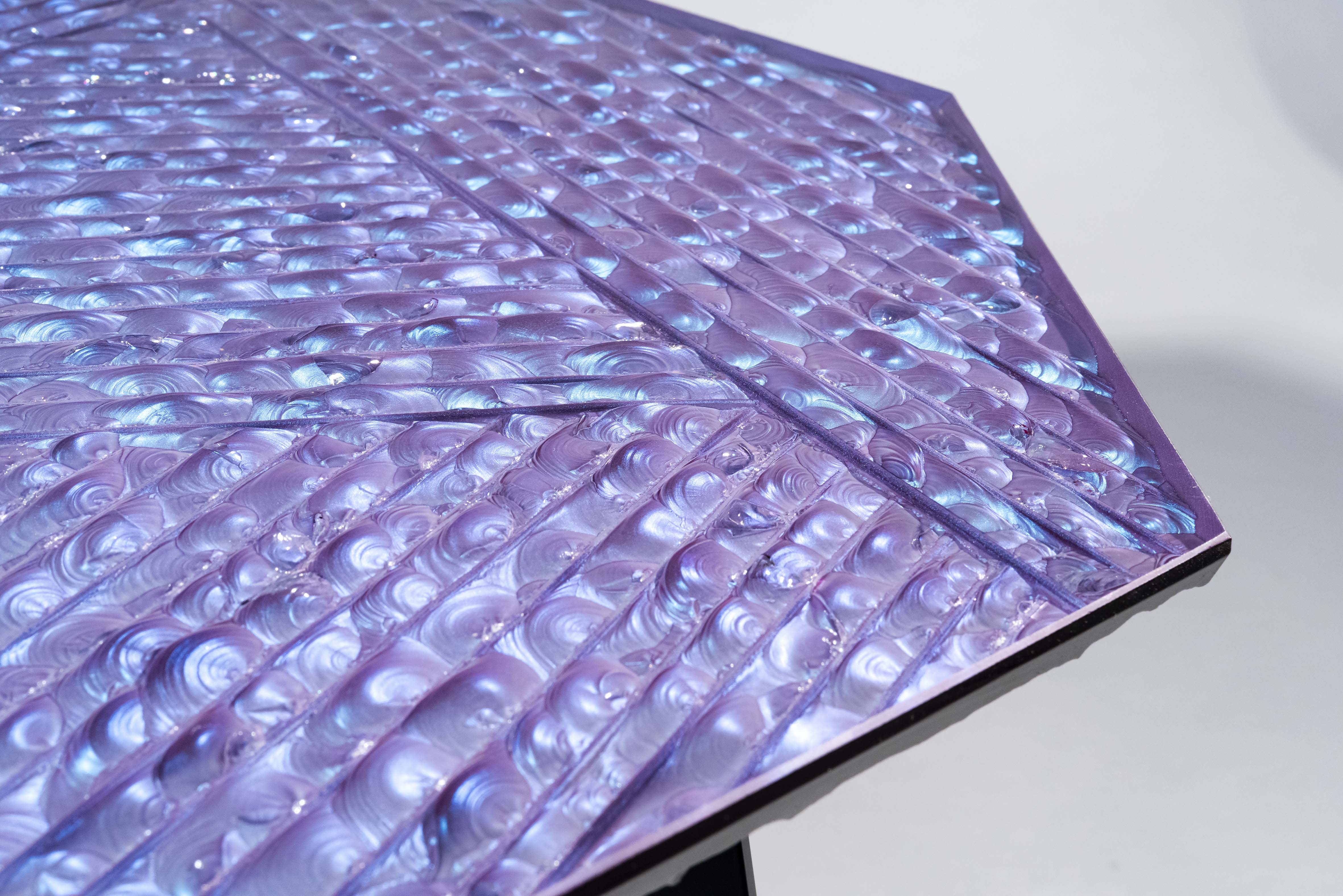
Ghirò Studio’s Velluto Coffee Table combines a carved blue crystal top with violet undertones for a finish that feels more like atmosphere than furniture.
While finishes like chrome and brushed steel remain mainstays, iridescence offers what they can’t: surprise. And, perhaps more importantly, personality. In a design era defined by customization and individual expression, materials can’t just sit quietly.
“At Ghidini1961, we see a future where materials are no longer just static components but elements that engage and react to their environment,” says Giuseppe.
Iridescence isn’t just about shine. It’s about surfaces that shift — that do something. If the material world is softening at the edges, finishes like Candy might just be leading the way.
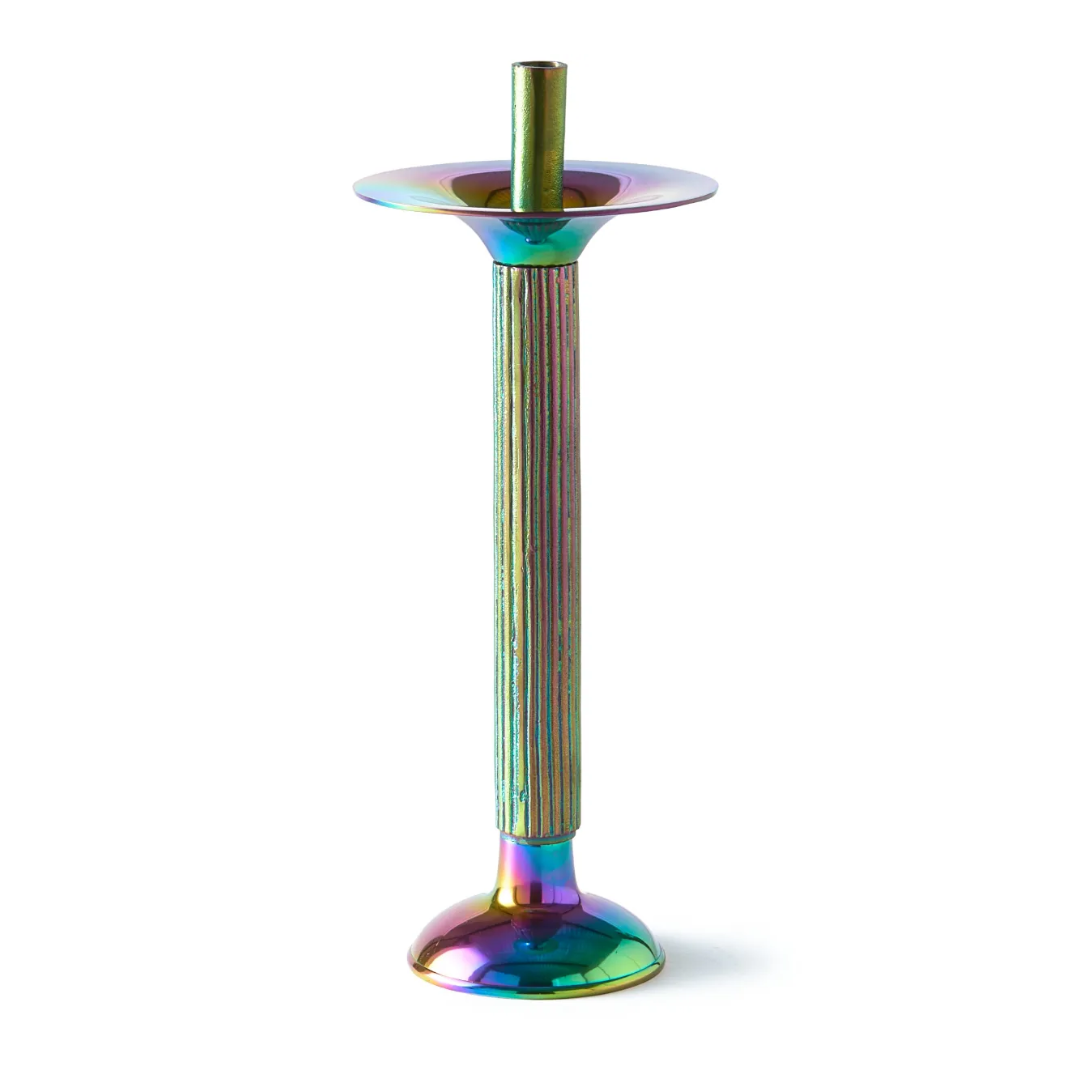
There’s something almost alchemical about this candleholder — the fluted lines, the antique shape, the eerie shimmer of iridescence that feels like the result of some beautiful chemical reaction. As if it’s weathered an aesthetic storm and emerged more enchanting. Place it on glass, lacquer, or mirrored surfaces and let it do its thing.
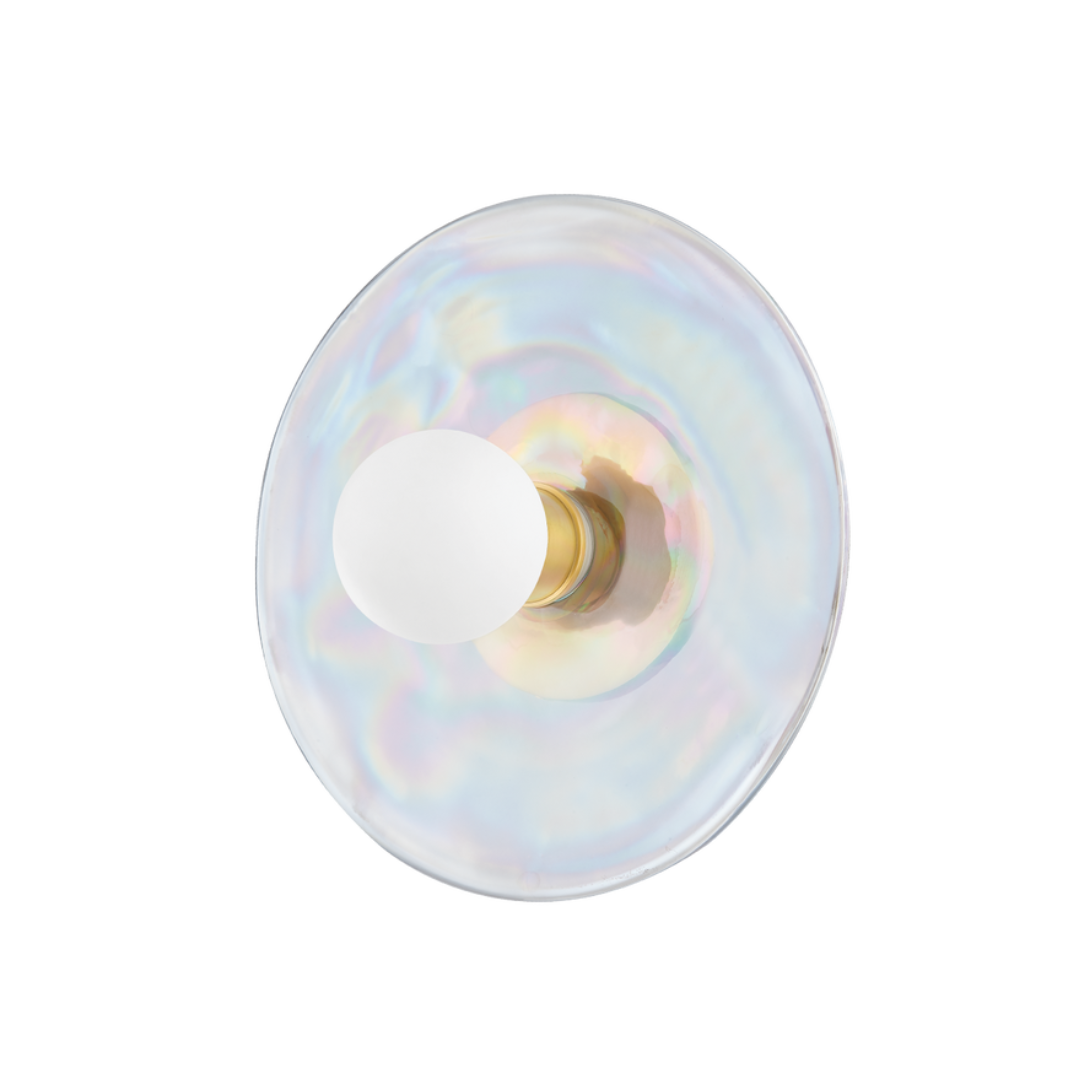
The GIANA sconce by Mitzi offers a subtler take on iridescence, with a jellyfish-like glow that feels otherworldly. It’s an easy entry point for minimalists: ethereal, airy, and just translucent enough to catch the light and cast a little spell across your wall.
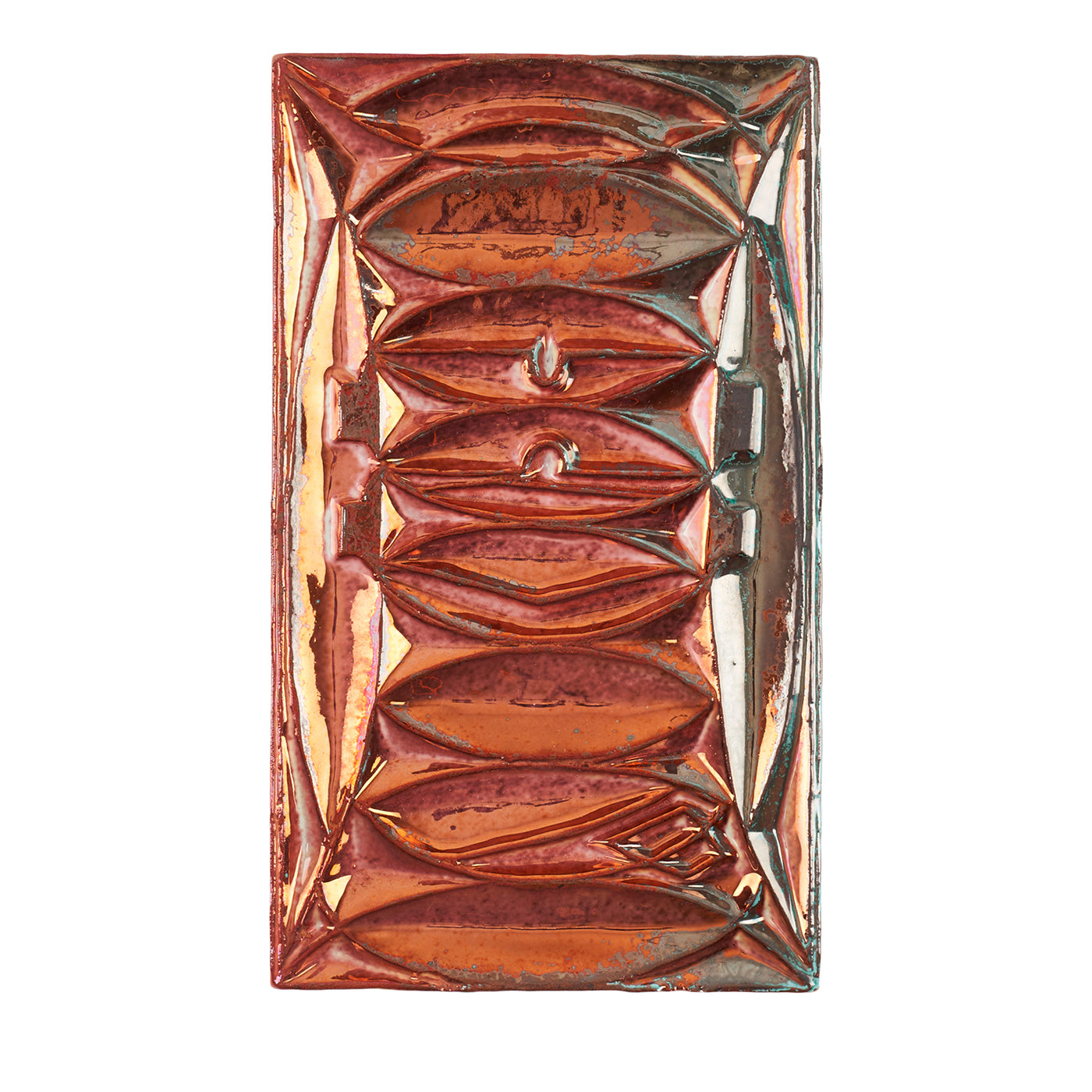
What does one do with an iridescent tile? The team at Artemest suggests using it as the focal point. Its natural pairing is with neutral palettes, but it can also pop against deeper, moody tones or heavily textured surfaces — chrome works too, when used sparingly. Think sleek table legs or hardware.
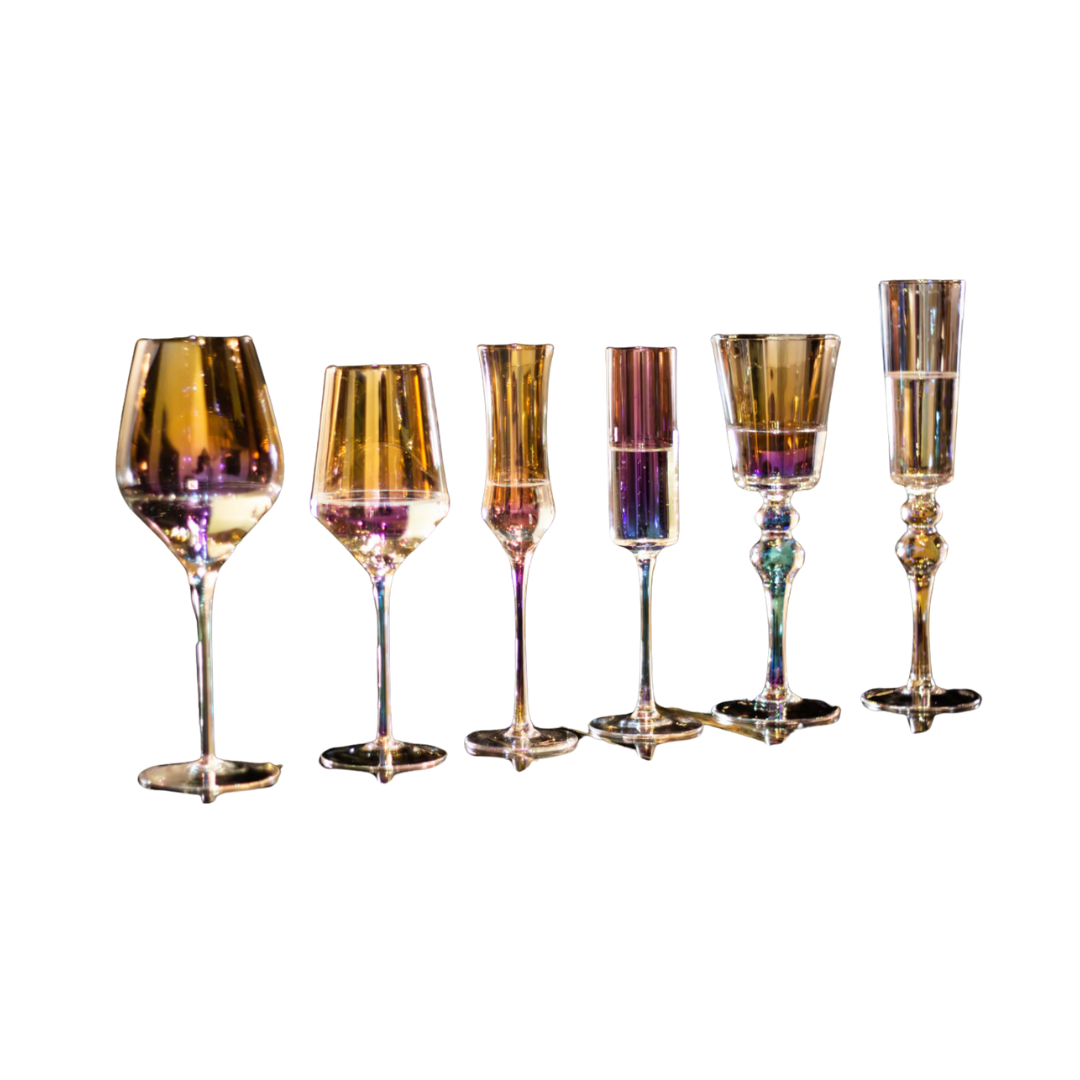
Noon & Moon’s set of six wine glasses looks like it belongs in an enchanted kingdom or a fantasy film. Each is hand-blown and completely unique, with charmingly imperfect swirls and bubbles. One-of-a-kind by design — and maybe the ultimate gift for your favorite Aquarius.
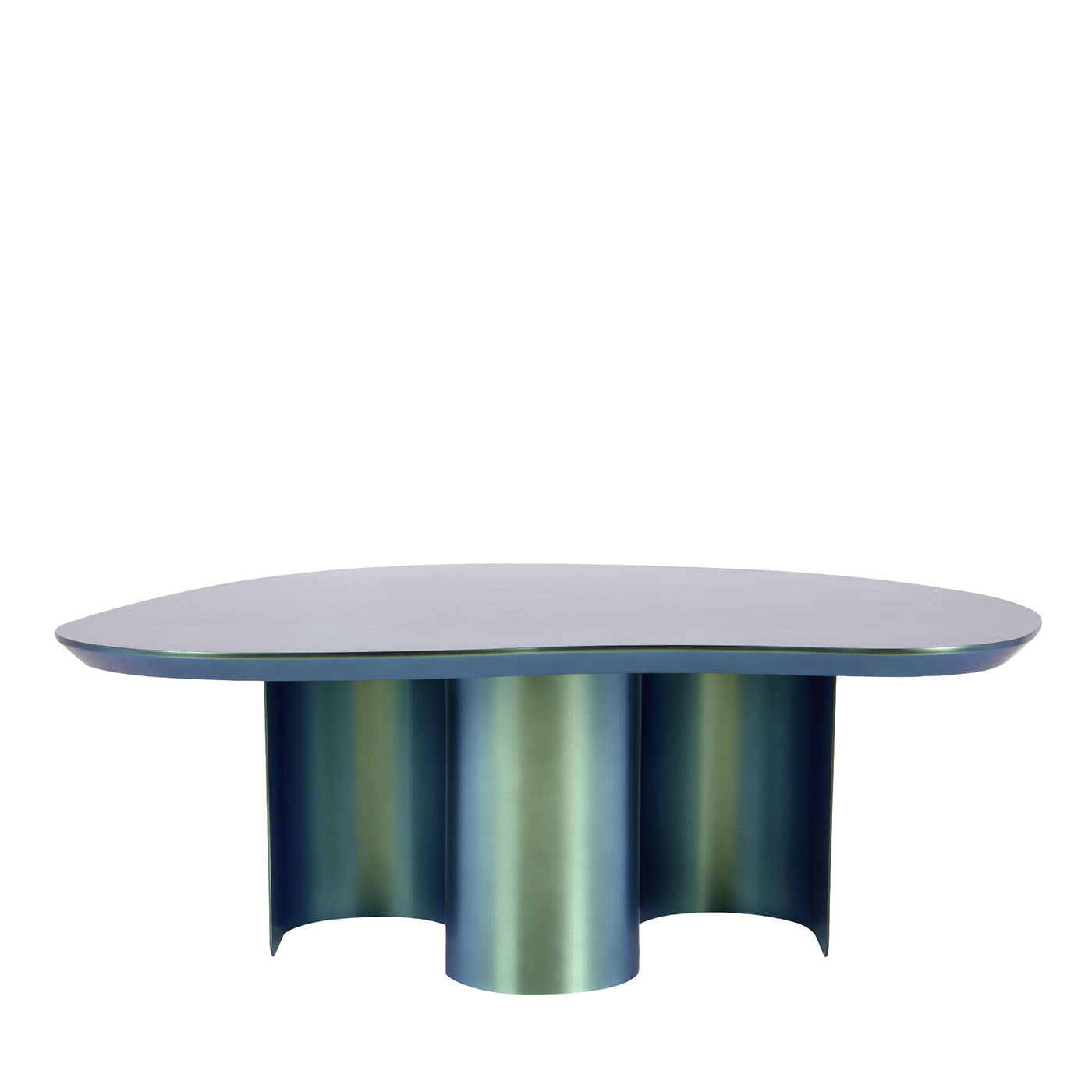
The North Light table by new-to-the-scene furniture maker Adrenalina draws from aurora borealis skies, capturing the surreal shift between blue, lilac, and green — hues that suggest constant motion, even when the table’s standing still. Style with opposites on the color wheel — say, a saturated orange vase next to an opalescent tile — or keep it classic with a sharp chrome detail.
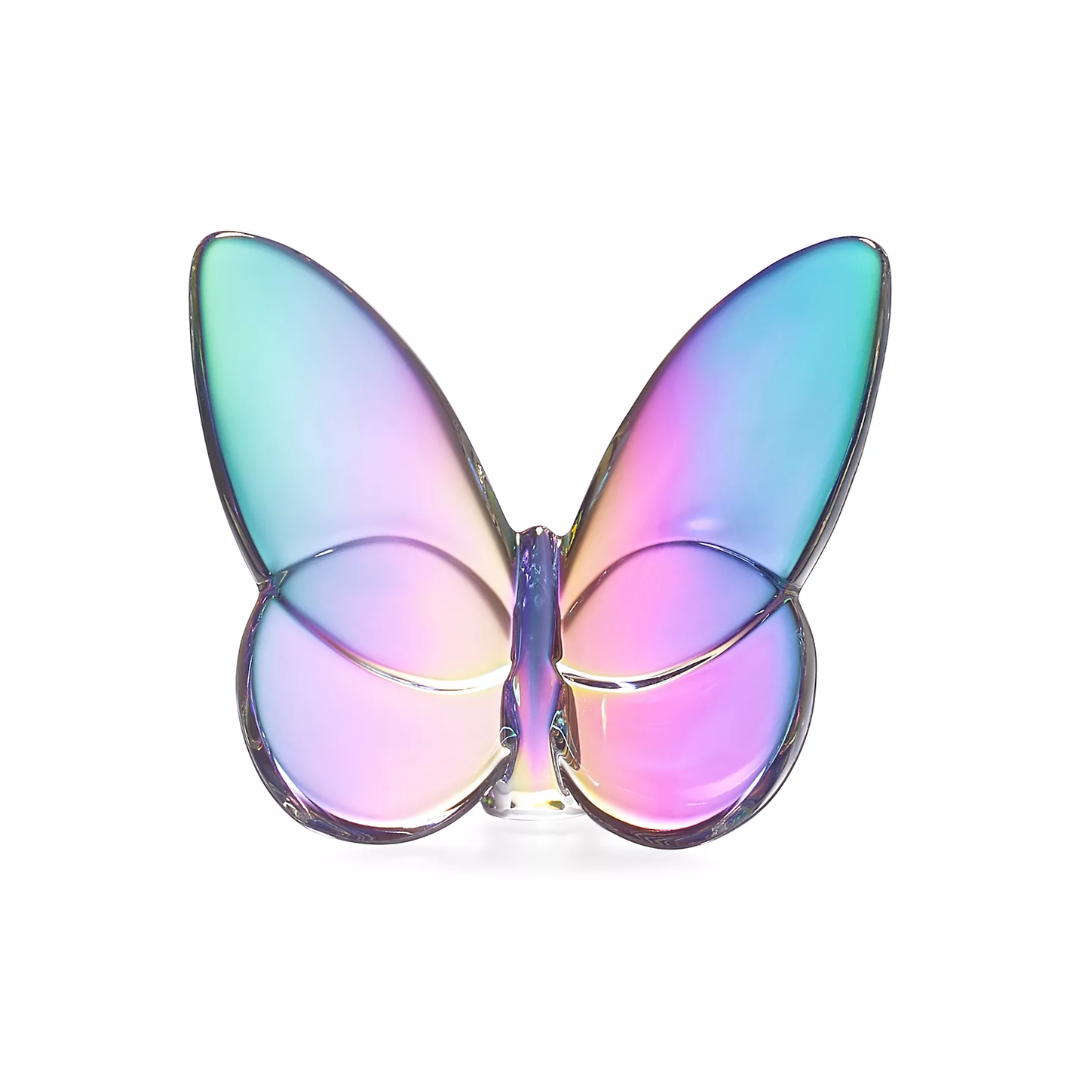
Baccarat earns its wings. Modeled after a butterfly in flight, this modern crystal is a symbol of transformation — and in this iridescent iteration, it becomes a supercharged visual metaphor for hope, brightness, and change. Pretty and poetic, it invites you to welcome a little whimsy into to the everyday.
On a budget? Colorful, transparent acrylic furniture delivers a similarly ethereal effect — minus the splurge.

Formerly covering fashion at L’Officiel USA, style maven Julia Demer brings her love of design to Livingetc’s world of interiors. As the title’s New York-based Style Editor, Julia's work reflects a sharp eye for detail and an innate passion for aesthetics. Her journey began with a strong foundation in design, honing her craft at renowned establishments like The Row and even establishing her own eponymous fashion brand. Julia’s design background is evident in the way she thoughtfully curates shopping edits, always maintaining a focus on emerging trends while preserving timeless sensibilities. For Julia, fashion and interiors go hand in hand, reflecting her lifelong commitment to perfecting the art of style.
-
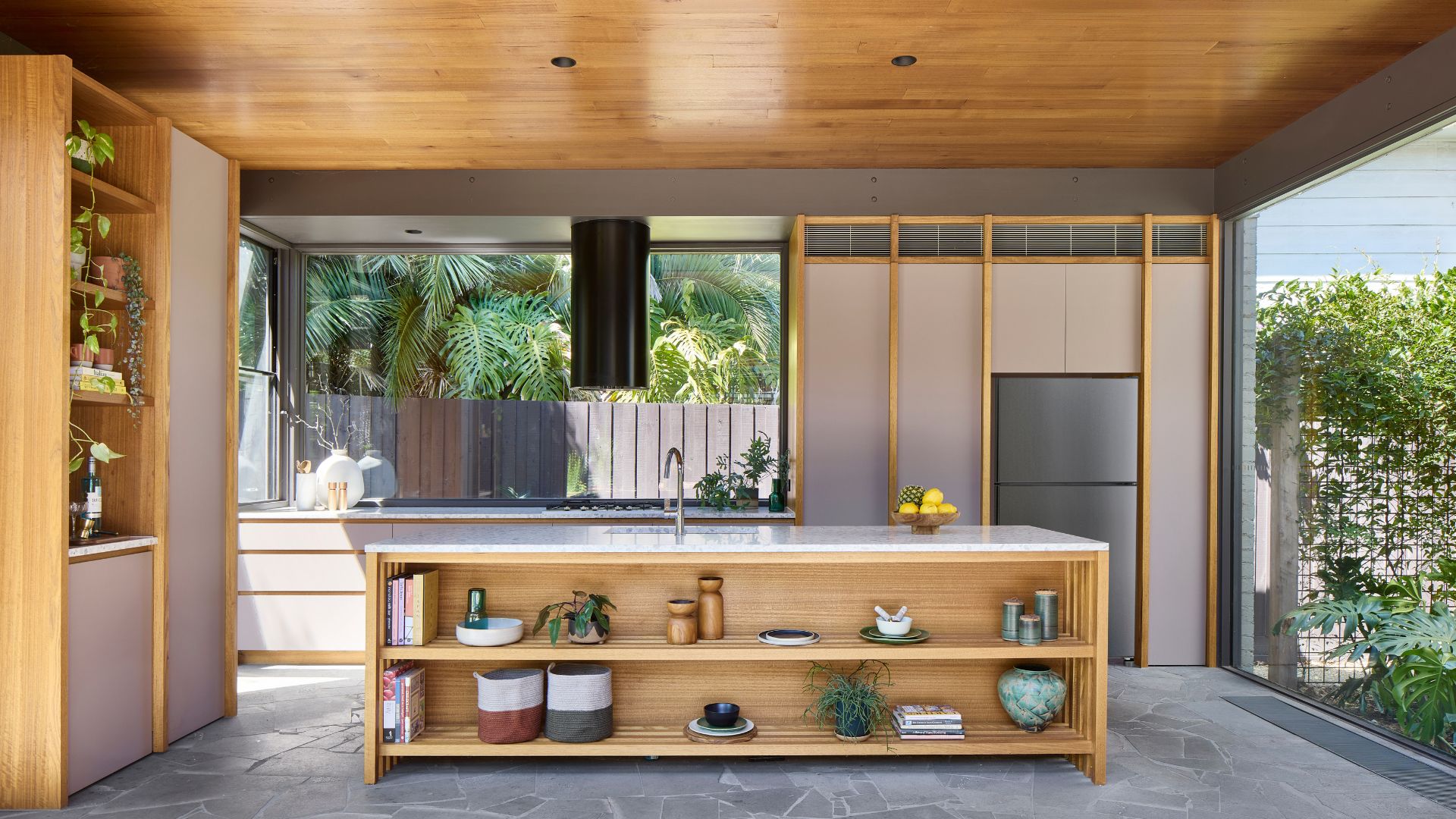 Biophilic Decluttering — What to Take Out of Your Home (and What to Put in) for a More Natural Home
Biophilic Decluttering — What to Take Out of Your Home (and What to Put in) for a More Natural HomeTry your hand at biophilic decluttering to ground your interiors, connect to the environment, and cure chronic clutter in one go. Here's how.
By Amiya Baratan
-
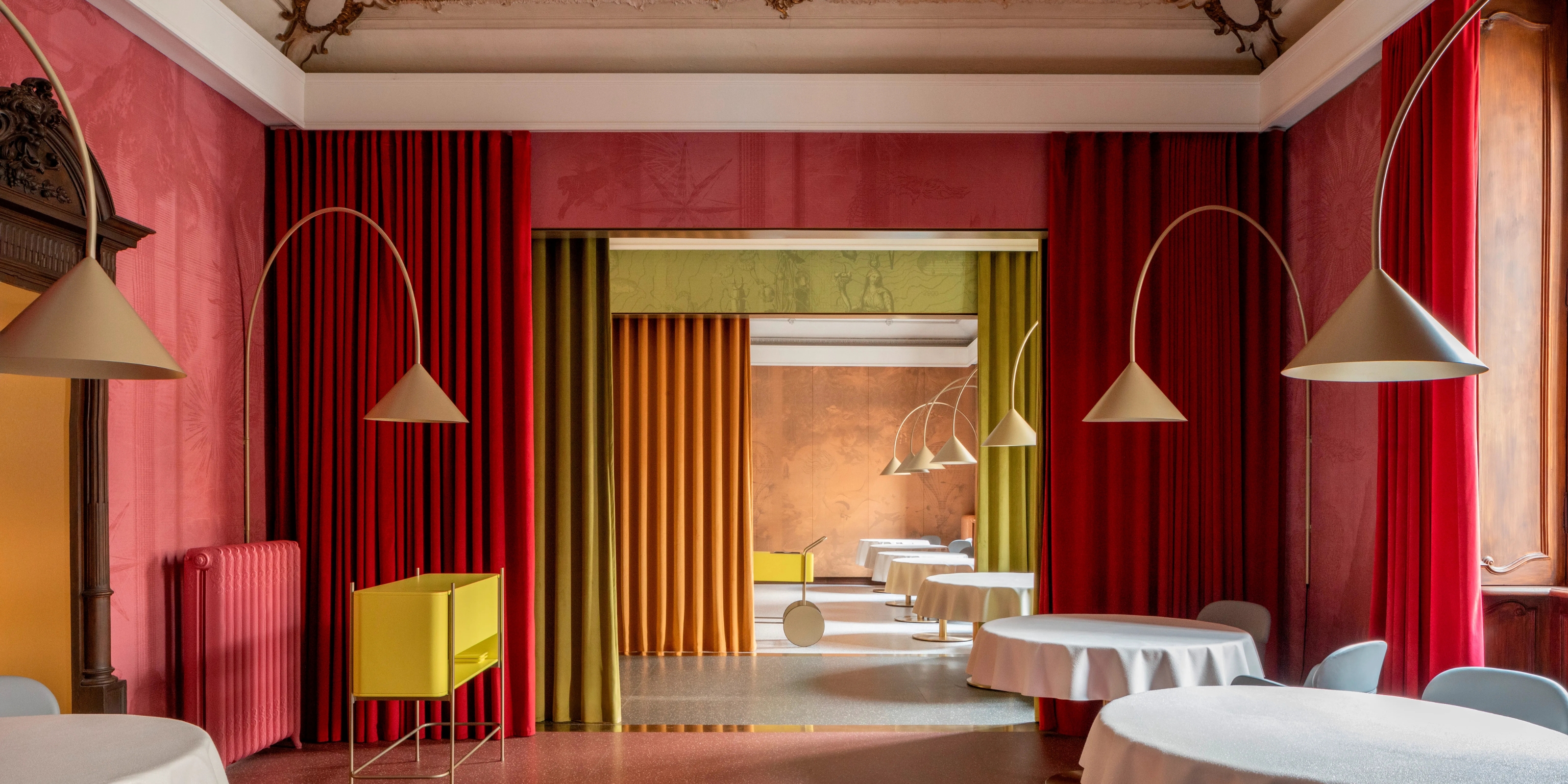 10 Arrestingly Beautiful Milan Restaurants Locals *Actually* Dine at — Selected for Their Interiors
10 Arrestingly Beautiful Milan Restaurants Locals *Actually* Dine at — Selected for Their InteriorsBrought to you by our community of culture insiders, this edit of the best restaurants in Milan sees authentic Italian food and immersive design unite
By Gilda Bruno
-
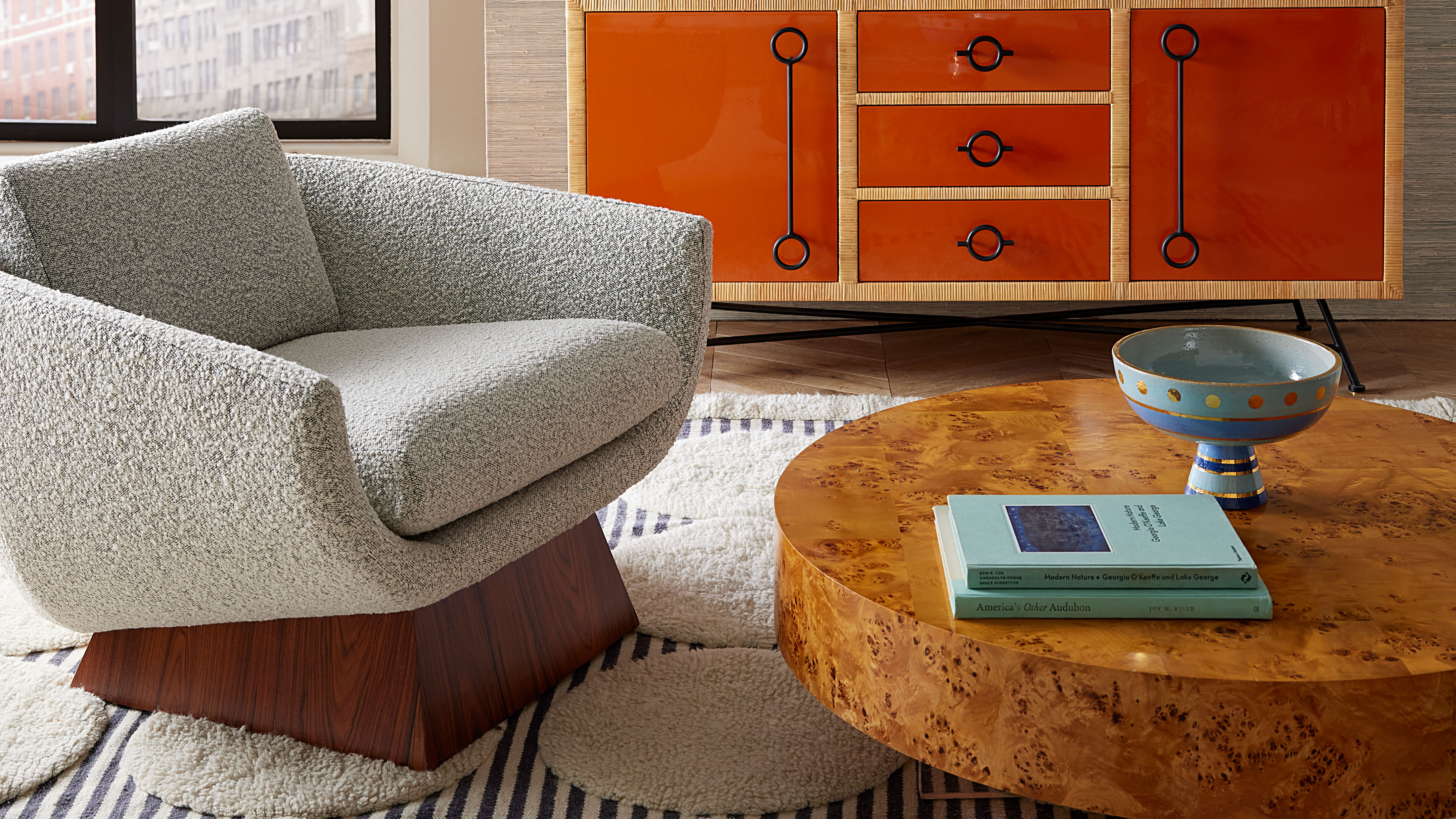 Burl Wood Decor Is 2025’s Most Coveted, but Expensive, Comeback — Here’s How to Get the Storied Swirls for Less
Burl Wood Decor Is 2025’s Most Coveted, but Expensive, Comeback — Here’s How to Get the Storied Swirls for LessIrregularity is the ultimate luxury, but you don’t need an antiques dealer to find it
By Julia Demer
-
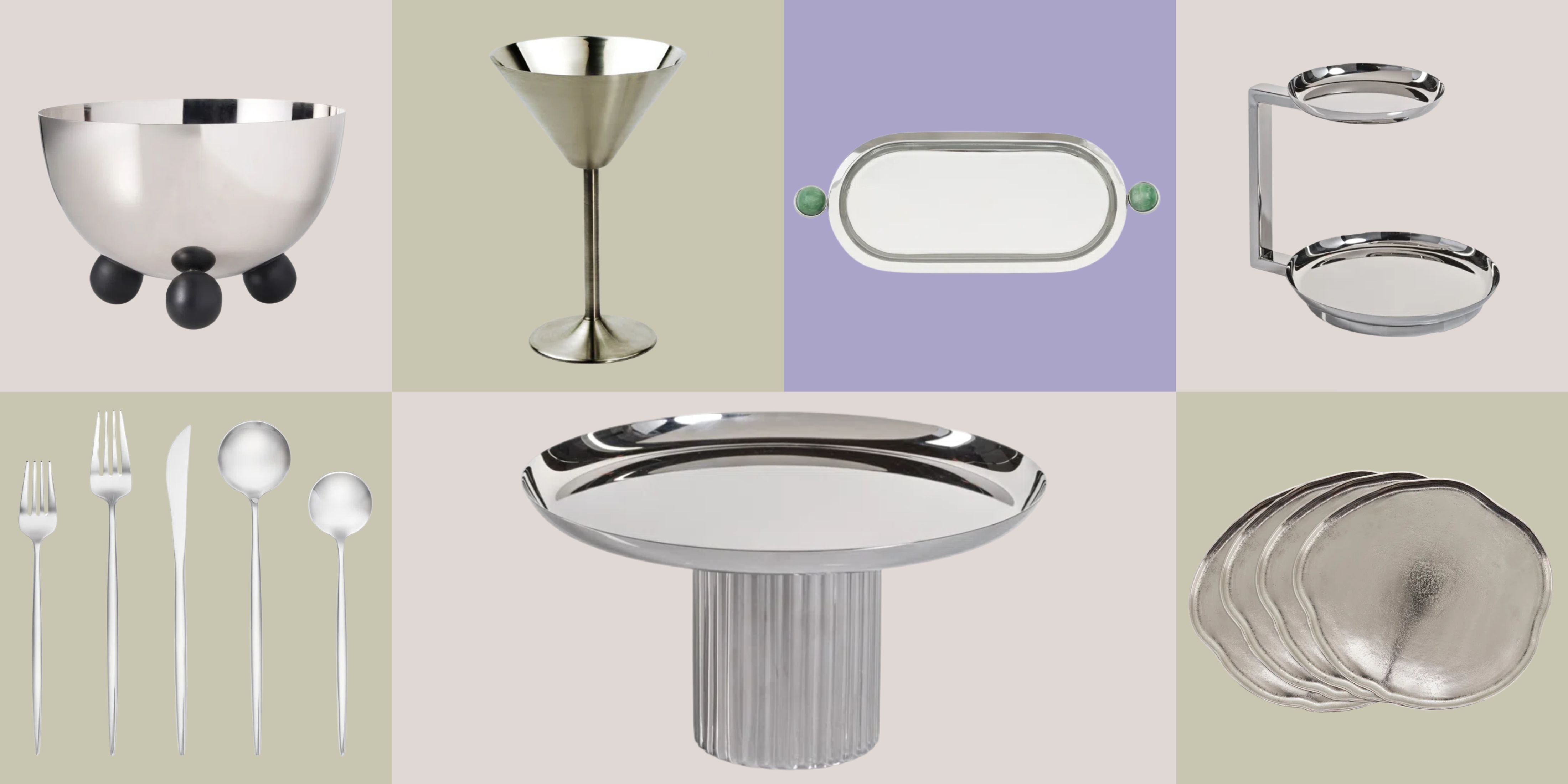 Silver Linings — The Best Chrome Tableware Might Just Be Hiding on Wayfair
Silver Linings — The Best Chrome Tableware Might Just Be Hiding on WayfairOnce reserved for legacy names and high-concept galleries, the silver revival is finally accessible — here’s where to find the good stuff
By Julia Demer
-
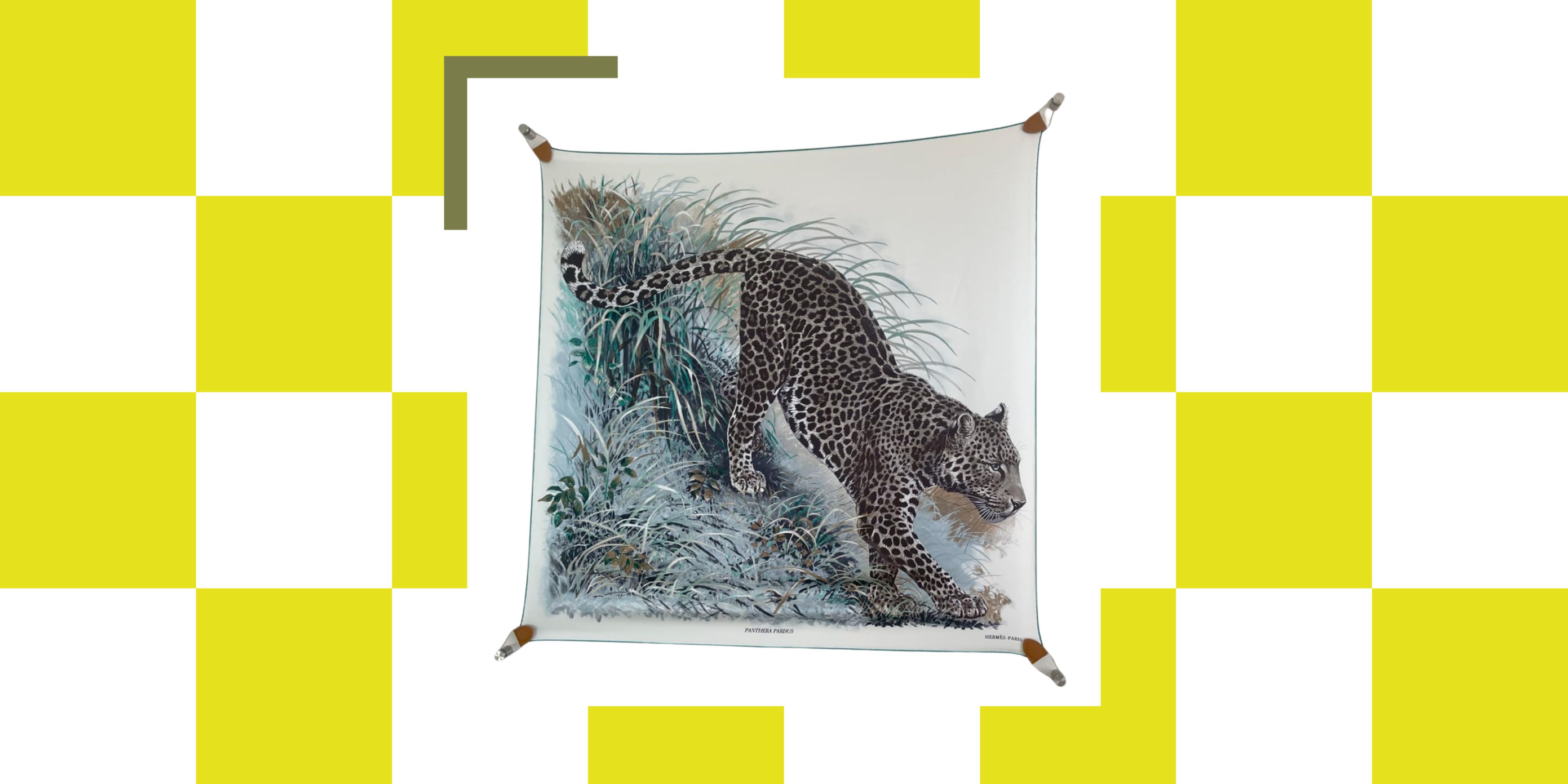 This Clever, Luxe-Looking Buy Is the Easiest Way to Turn Your Designer Scarf Into Wall Art — No Frame, No Fuss
This Clever, Luxe-Looking Buy Is the Easiest Way to Turn Your Designer Scarf Into Wall Art — No Frame, No FussBecause silk this pretty should never stay in a drawer
By Julia Demer
-
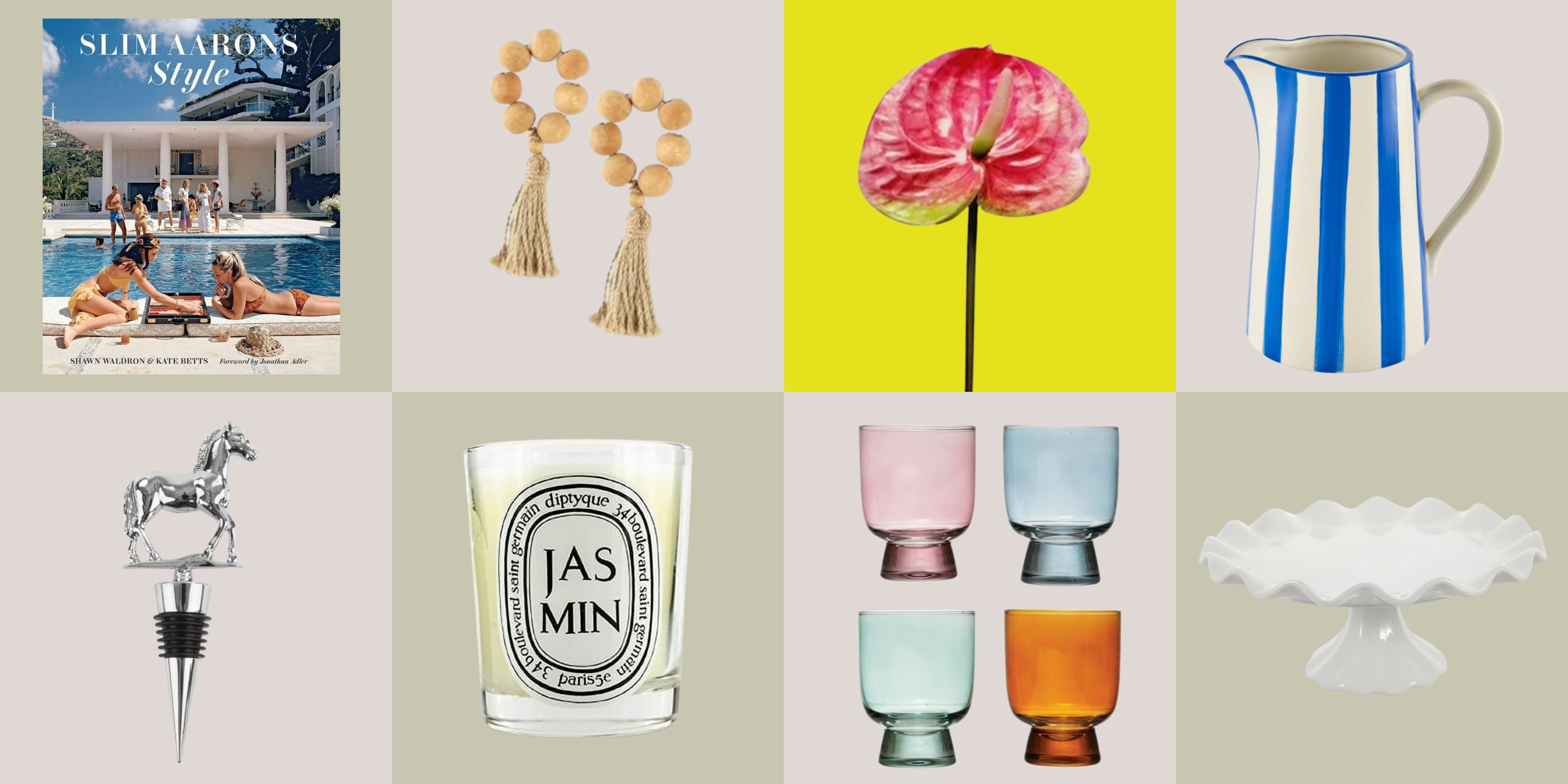 12 Essentials Every Cool, Collected Spring Host Needs — And You’ll Never Guess Where They’re From
12 Essentials Every Cool, Collected Spring Host Needs — And You’ll Never Guess Where They’re FromGuests will think you thought of everything, you just knew where to shop
By Julia Demer
-
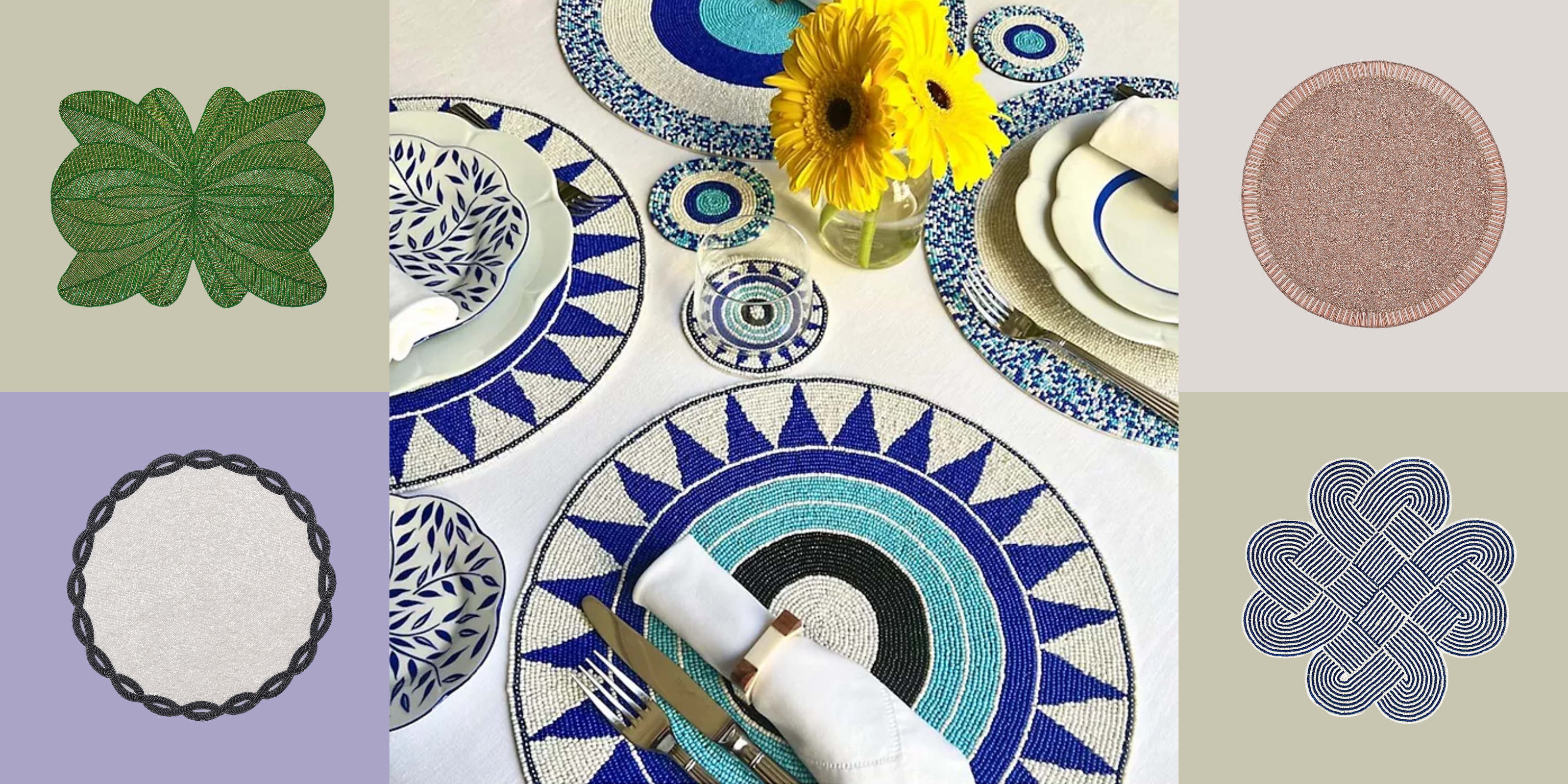 These Beaded Placemats Are the Glamorous Art Deco-Inspired Accent Your Tablescape Has Been Missing
These Beaded Placemats Are the Glamorous Art Deco-Inspired Accent Your Tablescape Has Been MissingThey've got texture, they've got sparkle, and of course, they've got style
By Devin Toolen
-
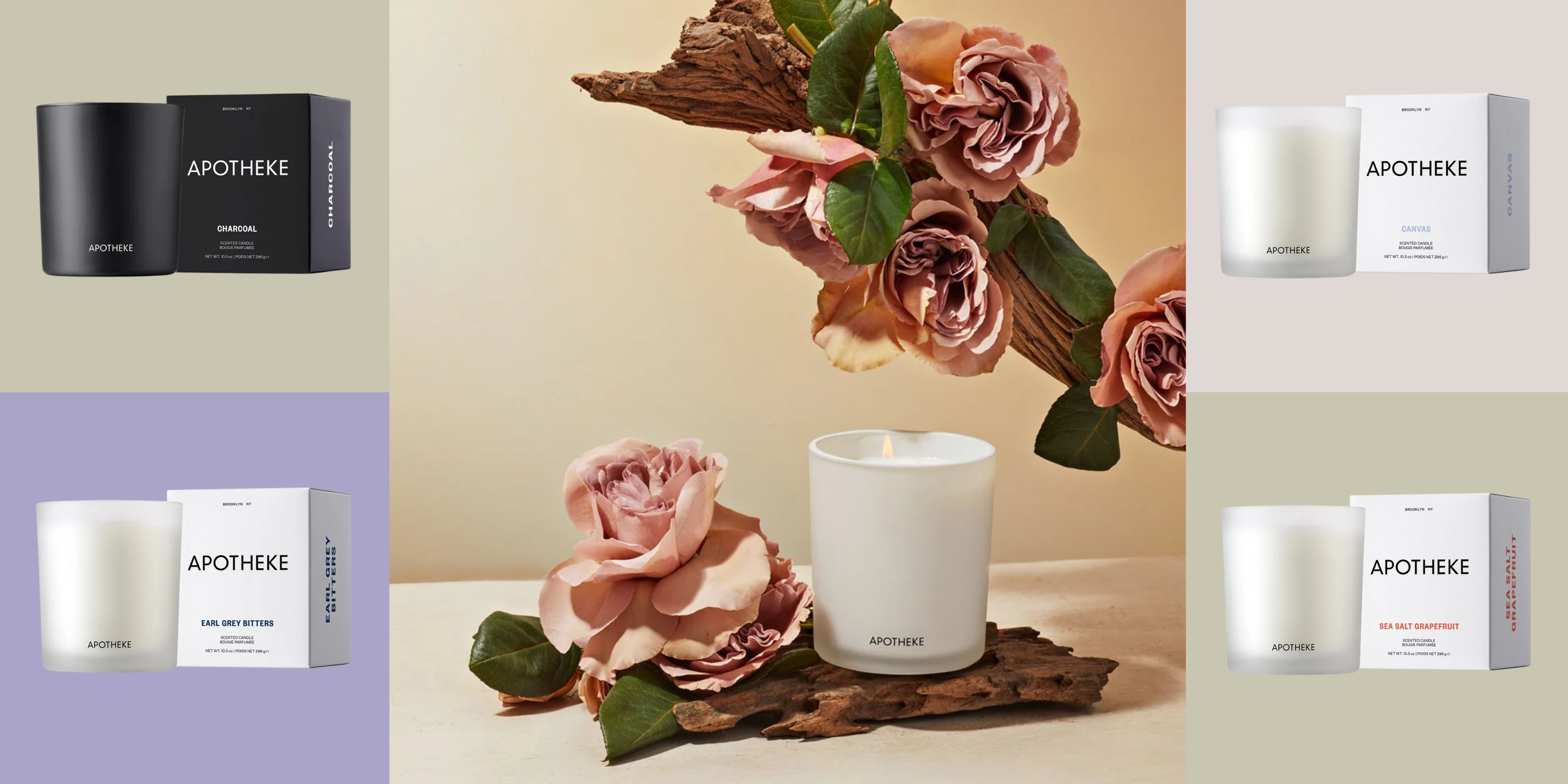 I Found an Earl Grey Candle That Actually Smells Like a Cup of Tea With Lemon
I Found an Earl Grey Candle That Actually Smells Like a Cup of Tea With LemonThey're strong, but not overpowering. Dynamic, yet always fresh. APOTHEKE's candles know how to captivate you from first whiff
By Devin Toolen
-
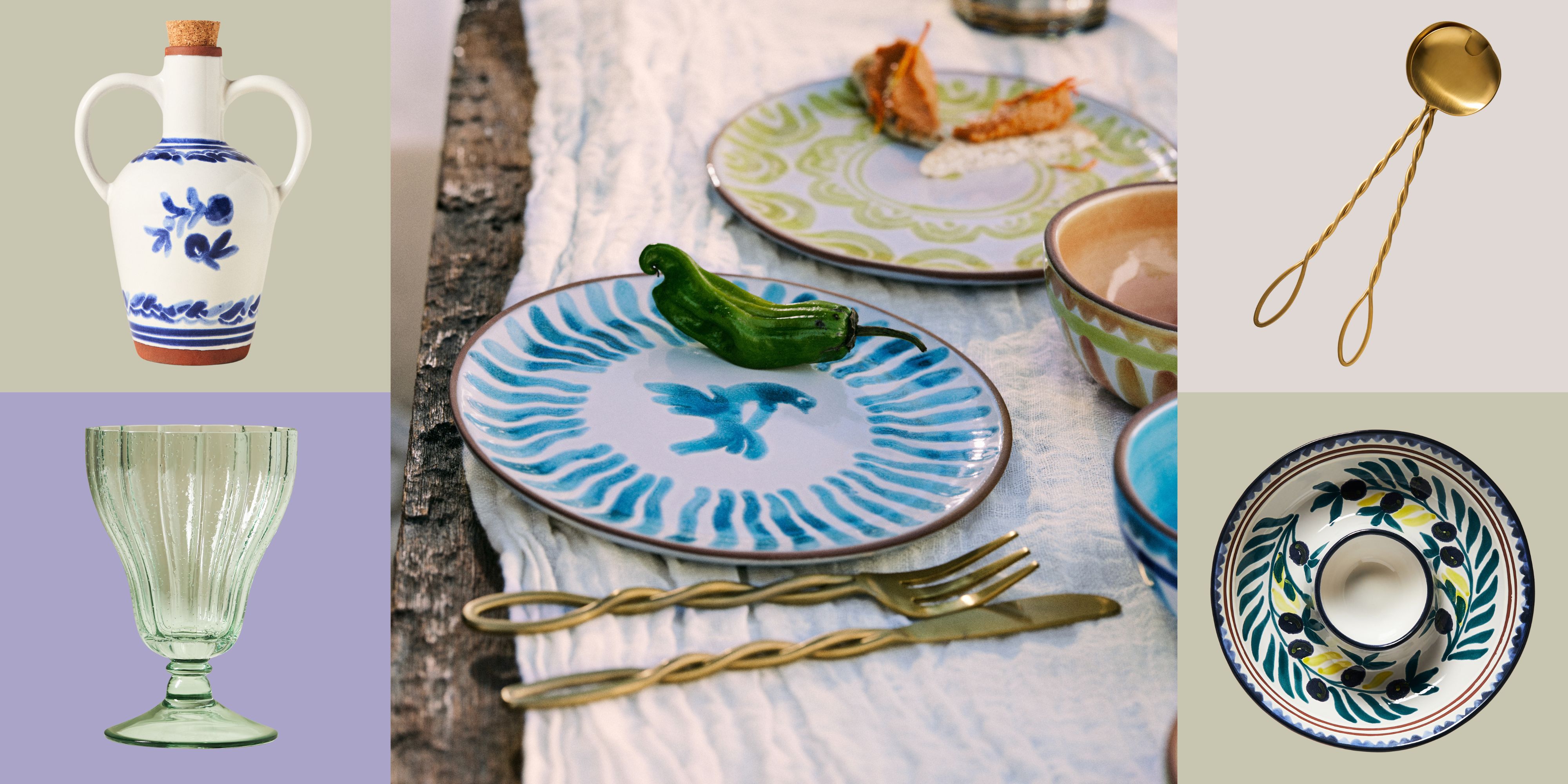 Tableware for Talkative People — The Mediterranean Dish’s Anthropologie Collab Was Made for Socializing
Tableware for Talkative People — The Mediterranean Dish’s Anthropologie Collab Was Made for SocializingMediterranean in both style and spirit, the joyful, pattern-forward collection brings the color, craft, and conviviality of Suzy Karadsheh’s cult-favorite brand to the spring table
By Julia Demer
-
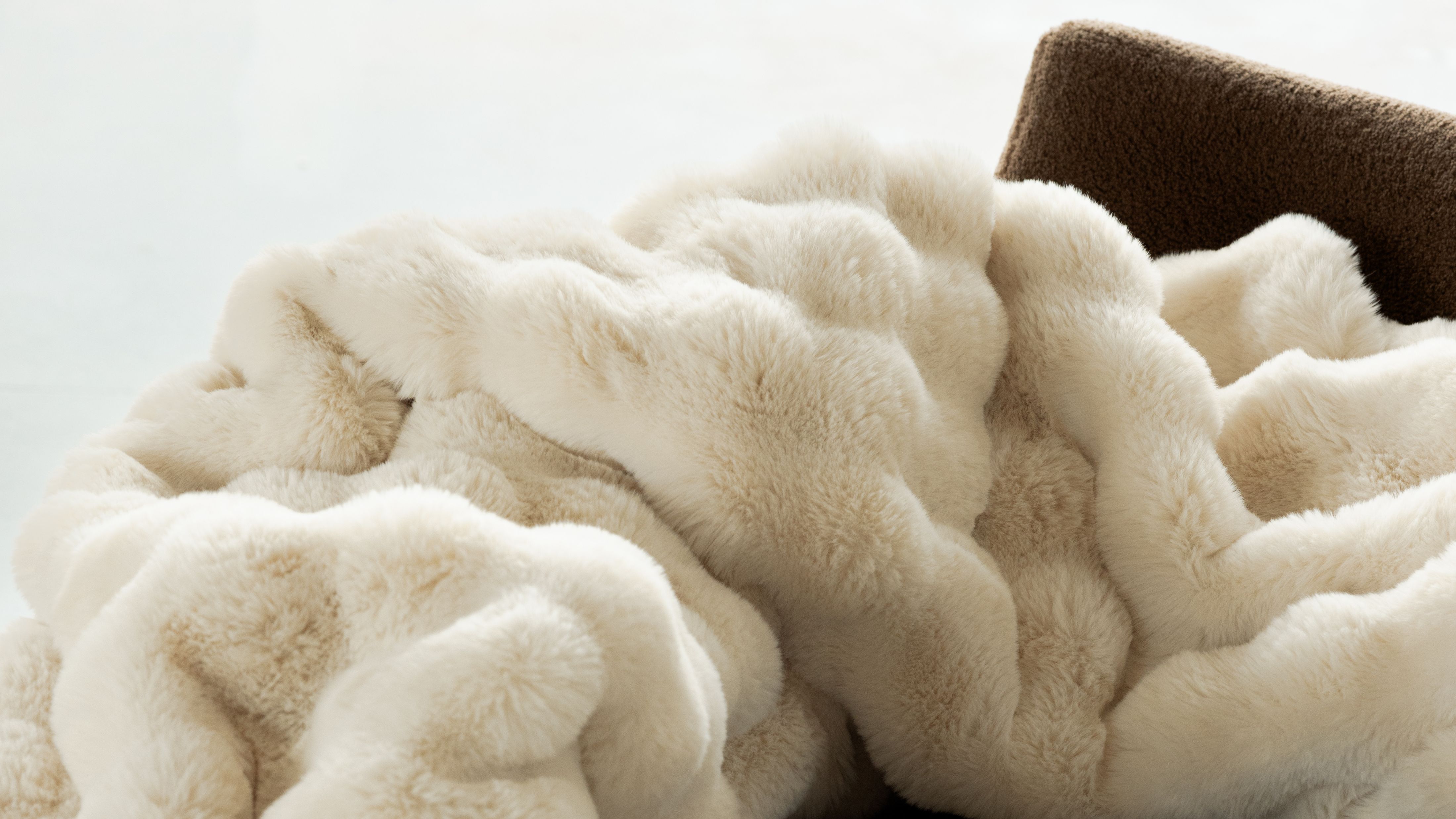 I May Have Just Found the Greatest Blanket on Earth — Cozy Earth, That Is
I May Have Just Found the Greatest Blanket on Earth — Cozy Earth, That IsPlush, photogenic, and so luxurious it made my sofa look expensive — this viral throw is more than TikTok fodder
By Julia Demer